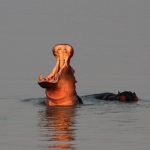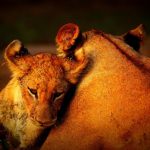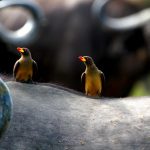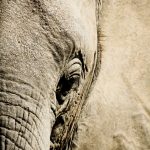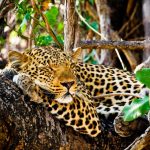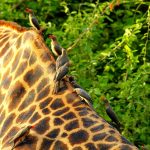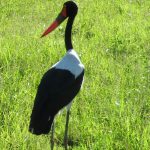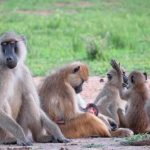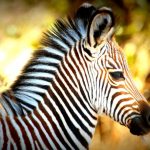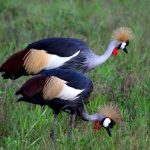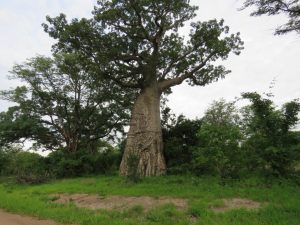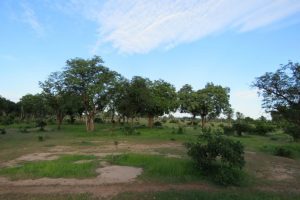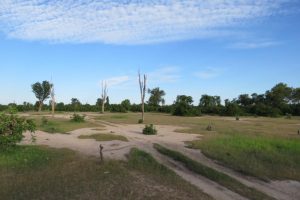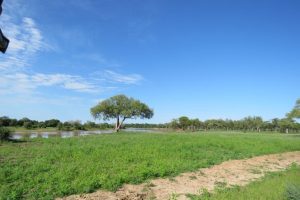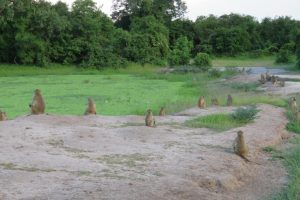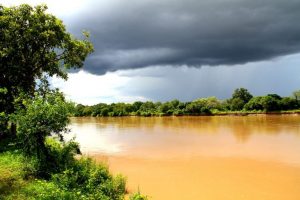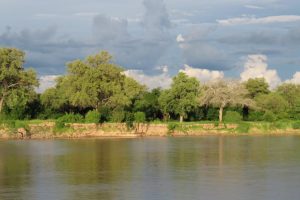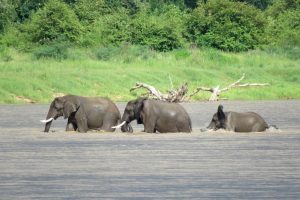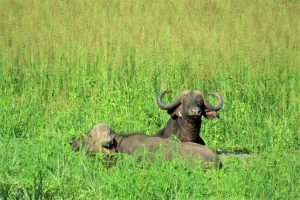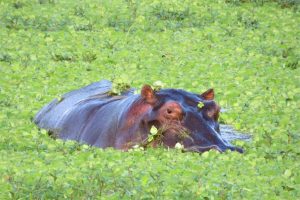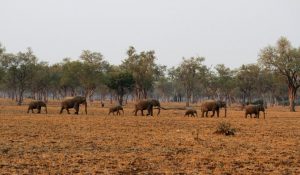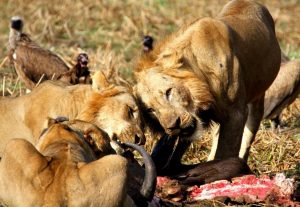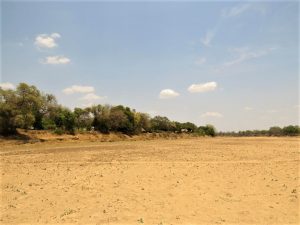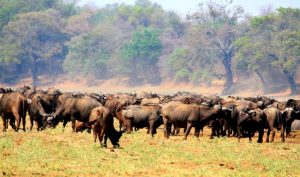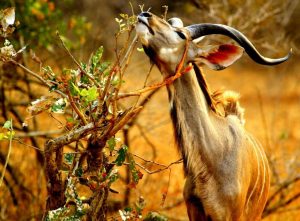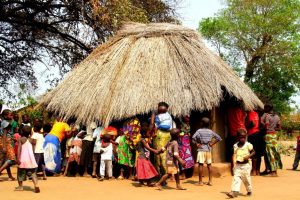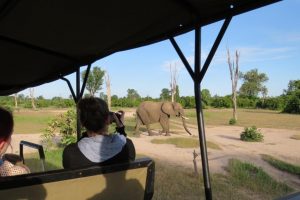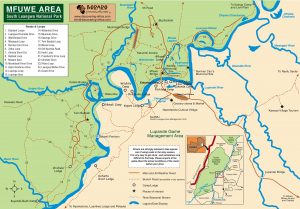South Luangwa National Park
More animals | Less traffic | World-class safaris
South Luangwa is one of the greatest wildlife sanctuaries and unspoilt wilderness areas in Africa. Wildlife is concentrated around the Luangwa River and its oxbow lagoons, with varieties of game and birdlife that have made the park world famous.
The national park covers 9050 square kilometres, with seasonal floodplains that create a biologically rich environment home to over 450 bird species, 110 species of mammals and a wide variety of reptiles, insects, amphibians and plants. The meandering Luangwa River –the lifeblood of the park – is the most intact major river system in Africa, with huge populations of crocodiles and hippos. Several large prides of up to 20 lions make the park their home, and South Luangwa is famous for having more wild leopards per square kilometre than anywhere else in the world.
You will also find magnificent plant species including baobab and sausage trees, and exotic wildflowers growing in South Luangwa.
Join one of Croc Valley’s licensed game drives or walking safaris into the park and experience South Luangwa’s pristine wilderness first-hand. We offer four-hour morning and night game drives throughout the year and walking safaris in the dry season.
More information on our safari and game drive activities
Check out our image galleries of Croc Valley game drives and the extraordinary birdlife in the park.
| Geography
Together with the North Luangwa and Luambe National Park, South Luangwa forms part of the Luangwa Valley in Zambia’s Eastern Province. The Luangwa Valley is an extension of the Great East African Rift Valley, a continental fault which runs from the Red Sea down the length of East Africa. As the rift reaches Zambia, it divides into two branches: the eastern branch encompasses Lake Malawi and the western branch forms the Luangwa Valley, stretching over 700km with an average width of 100km. South Luangwa National Park is bordered by the Muchinga Escarpment to the west and the Luangwa River to the east – although the park also extends east of the river in two areas, Nsefu and Luamfwa. The Luangwa River is a major tributary of the Zambezi River, and the waters that flow through the Luangwa will also pass over Victoria Falls. The river flows south-west from its source 2133 metres above sea level to where it joins the Zambezi at 335m. During the rainy season, lots of small sand rivers feed the Luangwa, which carves its way along the valley floor, rapidly eroding the outer bends and depositing silt in the loops. When the river cuts a new course, the old course is left to silt up, forming “oxbow lagoons”. These lagoons are an important part of the valley’s ecology, supporting the abundant wildlife in the South Luangwa region. |
||||||||
| Vegetation
South Luangwa has a patchwork of vegetation zones, including the evergreen miombo forests, interspersed with open, herby “dambos”, shallow lakes, seasonal floodplains, oxbow lagoons and the most commonly found mopane woodlands, which cover 55 percent of the valley floor. There are only a few large open plains, such as the famous plain in the heart of the Nsefu Sector, where natural salt springs attract thousands of crowned cranes. The lush vegetation on the banks of the river includes red mahogany trees, sausage trees, knobthorns, black ebony, leadwood, winterthorn, the tall vegetable ivory palm, marula, and magnificent specimens of baobab.
|
||||||||
| Seasons
Seasonal changes are very pronounced in South Luangwa and add to the park’s richness, ranging from dried-up, scraggy bushveld in the winter to lush green landscape in summer months. The wet season begins with first occasional rain showers in November and turns the dry bush terrain into a stunning green. During this time many animal babies are born, and the short grass offers excellent game viewing opportunities. The rainy season reaches its peak between January and March when the Luangwa River is in full flood and the landscape changes into a dense jungle. Large clouds form on the horizon and heavy, but usually short, afternoon showers with roaring thunder and lightning become more frequent, also filling up the pools and lagoons. The sun rises early and sets late, allowing long safari days. Humidity is high and temperatures can get up to the mid-30s (Celsius). Birdlife is the richest during the “emerald” wet season when insects are thriving and migrant birds arrive in their thousands. Many birds nest during this time and display their full breeding plumage. Important notice: Croc Valley Camp stays open all year round and continues to offer game drives during the wet season. This is a great time to see an abundance of bird species as well as land animals in a lush green environment.
In April and May the rains stop and the bush starts to dry out into a golden brown colour. The level of the Luangwa River drops and exposes large sandbanks. Cool mornings and warm clear days carry on until July, with maximum temperatures of 30 degrees. You will need warm clothes for the evenings, as the temperature usually drops fast after sunset. With the cold mornings, predators such as lions and leopards are often active later in the day, which will increase the chance of sightings. The dry season peaks between August and October, with temperatures up to the mid-40s and very little humidity. This is the best time for land animal sightings because there is little water around, and animals are concentrated around the river and lagoons. Seeking protection, small buffalo herds join together and form super-herds of up to 500.
|
||||||||
| Mammals
There are 110 recorded species of mammal in the South Luangwa National Park. Some are common and frequently seen such as puku and impala, while others such as the caracal and aardvark are rare. Some animals such as the Moloney’s monkey can only be found in certain areas of the park. We have frequent sightings of large lion prides, leopards, hyeana and smaller predators such as civet, genet and mongooses. There are very large numbers of leopards, hippos and crocodiles in the park. The resurgence of the African Wild Dog population is a local conservation success story. This species was almost wiped out by anthrax in the late 1980s, but the population has increased a lot over the last decade. Our game drives often spot packs of 10 or more wild dogs, also known as “hunting dogs” and “painted dogs”. During our Game Drives, it is not uncommon to see large packs of wild dogs – also known as African hunting dogs or painted dogs. Previously titled “Elephant Valley”, South Luangwa has no shortage of elephant herds or buffalo, which gather in groups of hundreds in the dry season. There are two endemic species of mammal that live only in South Luangwa National Park: The Thornicroft Giraffe and Cookson’s Wildebeest. Read a checklist of all mammals in South Luangwa here |
||||||||
| Birdlife
South Luangwa is a superb destination for birders, as it proudly boasts a bird list of more than 450 species. The riverbanks are home to large populations of carmine bee eaters, raptors, lovebirds, weavers and kingfishers. In the wet season birdwatchers can see hundreds of large water birds such as the red-faced yellow-billed storks, pelicans, marabous, great white egrets and black-headed herons wading in the shallow water. Crowned cranes, with their golden tufts, are renowned in the area, and congregating in large flocks at the salt pans. Around November, palearctic migrant birds arrive in the valley to feed in the warm rainy season brings. These birds include white storks, European swallows, hobbys, bee-eaters, steppe eagles and steppe buzzards. Read the Croc Valley bird checklist here |
||||||||
| History of man in the valley
The main tourist area of South Luangwa National Park is in the rapidly-growing rural settlement of Mfuwe, an area occupied and surrounded by people of the Kunda tribe. Like many tribes in Zambia, the Kunda trace their origins to the Luba Empire of the Congo, who began to arrive in the area in 14th century. In the 1830s people of the Ngoni tribe, having invaded from the south, settled on the Eastern plateau. The Kunda people, who originated from the Luba, invaded the valley from the west and settled there. There were many conflicts between the two tribes during the remainder of the 19th century. Dr David Livingstone crossed the Luangwa Valley in 1866 and commented:
European settlers greatly influenced the area while populations of local people continued to grow and expand. By the end of the 20th century the Luangwa Valley was renowned for its wildlife and tourists from all over the world started to visit the now-famous South Luangwa National Park.
|
||||||||
| History of game protection in the area
Game protection in the Luangwa Valley began in the late 19th century when the British South Africa Company (BSAC) imposed a total ban on hunting hippo and elephants, resulting in an ongoing abundance of hippos along the Luangwa River. As elephant numbers recovered, the BSAC established the first game reserve in the Luamfwa region in 1904, also intending to protect the last of the valley’s endemic Thornicroft’s giraffe. But soon elephant populations began to get out of control, threatening the livelihood of local villagers and farmers. Certain hunting licences were handed out to shoot the crop-raiding elephants, but around the same time elephant poaching became a lucrative business thanks to the value of their ivory tusks. The government conducted an in-depth survey in 1932 recommending the proclamation of game reserves and the creation of an elephant control department. The story of Normann Carr
picture source: http://www.normancarrsafaris.com/about/history An account of the history of the South Luangwa National Park cannot be complete without reference to the life of the great conservationist and philanthropist Norman Carr, one of the most visionary and influential people in the development of South Luangwa. Norman Carr was born in Chinde, a Portugese concession, in 1912 and was appointed as a game ranger in the Luangwa Valley in 1939. In the 1940s and 1950s Norman Carr worked with the local people to establish protected areas for the wildlife and to ensure parts of the income generated from tourism went to the community. He was one of the first people in Africa to realize that sustainable conservation could only be realized in close cooperation with the local community. In 1949, he persuaded Senior Chef Nsefu to set aside some of his tribal land for photographic safaris, allowing him to keep the revenue for his people. He also recommended that hunting safaris be operated with the revenues going to the local tribe. In 1958, Norman acquired and raised two orphaned lion cubs, documented in the book and subsequent movie “Return to the Wild”. The two lions were released in 1961 as mature males into North Luangwa National Park, thus concluding successful rehabilitation to the wild. In 1973 the elephant population was estimated to be 100,000 and found to be causing a major impact on the surrounding areas, but poaching was rampant too and numbers of elephant and the endangered rhino, began to decline steadily. During the 1980s, Norman was one of the main facilitators of the “Save the Rhino Trust”, which assisted the government in sending out patrols to combat poachers who had seriously depleted the rhino and elephant populations in the valley. Elephant poaching was curbed to some extent, but rhinos unfortunately could not be saved and today there are none in the area. In 1998, local stakeholders created the Conservation South Luangwa (CSL, formerly South Luangwa Conservation Society) to fight the battle against poaching, human/wildlife conflicts, encroachment, habitat loss and to support sustainable community development in the valley. Through the combined efforts of CSL and lodge owners to restore and protect their natural resources, South Luangwa has become Zambia’s flagship national park and a true wilderness region with a stable population of elephants.
|
||||||||
| National Park entry fees
All park fees are payable directly to the National Park as you enter the main gate in either US $ or Zambian Kwacha. Below you will find a complete list of park-fees for the year 2023. All prices are quoted per person per calendar day, children under the age of 12 will get a 50% discount. Please also note that the park fees are subject to change without prior notice. DNPW entry fees (per person per day)
National park rules Self-driving visitors are allowed inside the park from 6:00am until 6:00pm. For guests joining our licensed game drives, the park gates will be open from 6:00am until 8:00pm. Unless stated otherwise, park fees are not included in the Croc Valley Camp prices, and must be paid in cash at the park gate. • Speed limit is 40km/h. Driving faster than this puts the animals in danger and scares them so you are less likely to see game. It also creates dust for other visitors • Animals always have the right of way when crossing the roads • Self-drive visitors are not allowed to leave their vehicles at any time while inside the national park • Do not leave litter or start fires. This can harm the wildlife and spoil the park for other visitors • Drive only on specified game-viewing roads: Driving off-road damages the vegetation and threatens the animals • At kills or sightings where there are several cars, take your place in the queue, switch off your engine and enable everyone else to enjoy the experience. No more than four vehicles are allowed at any sighting • Minimize unnecessary noise from music, cell phones or loud talking • Keep a safe distance from all animals and do not force any reaction from them • 4×4 vehicles are strongly recommended, and no trucks are allowed inside the national park. |
||||||||
| Map of South Luangwa National Park
Useful information to enjoy your safari holiday in South Luangwa
|

